Finland’s greatest climate act
What can we learn from the Finns who are standing up for science?
Earlier this year, Europe’s most powerful nuclear reactor, Olkiluoto (OL3) started producing energy in Finland. Olkiluoto nuclear power plant is expected to meet around 14% of Finland's electricity demand, reducing the need for imports from Sweden and Norway.
Finland's reactors are among the world's most efficient, with an average lifetime capacity factor of over 90%. A third of the electricity produced in Finland comes from nuclear energy, which plays a large role in the country’s ambition to be carbon-neutral by 2035.
Although it is the largest nuclear reactor in Europe, this visualisation shows the amount of land required by the Olkiluoto 3 nuclear power plant with the size of a wind farm that would produce similar generation. (If you don’t want to click the link, trust me, the land footprint is tiny by comparison.)
Although Finland benefits from hydropower, the country is part of the deregulated Nordic electricity system, which faces shortages when hydroelectric generation is curtailed, for example in dry years. Since hydropower is not enough to keep Finland’s power grid operational year-round, the Finns have chosen a more reliable clean energy solution – to increase nuclear power output. Hence in 2019, the Finnish government announced a new energy policy to phase out coal power by 2029. This policy supports building two nuclear reactors and extending the operating lifetimes of existing reactors.
Finland’s nuclear reactors are well-managed. The process of increasing the licensed power level of a commercial nuclear power plant is called a 'power uprate'. OL3's operator Teollisuuden Voima Oyj, TVO, has ensured that Finnish reactors have been uprated since they were built. This means that although Olkiluoto 1 and 2 started up in 1978-80 at 660 MWe net, by 2010 they were rated at 880 MWe net each. Their planned operating lifetime was also extended to 60 years. TVO plans to uprate them further to 1000 MWe each.
Finland’s nuclear power plants now produce over 40% of Finland's electricity. Three of them are situated on Olkiluoto, where the world's first Geological Disposal Facility (GDF) for spent nuclear waste, Onkalo, is being built. Onkalo, which means ‘pit’ or ‘cavity’ in Finnish, is a 450m deep geological repository intended for the final disposal of spent nuclear fuel from 2025.
While much of Europe has battled misinformation and protests against nuclear energy and spent fuel storage, Finland doesn’t seem to have experienced the same level of opposition from the public, activists, or politicians. Why is this?
A shift in public perception
In the 1980s, over 40% of Finnish people said they wanted to reduce the use of nuclear energy. However, support for nuclear energy has been gradually increasing since the 1980s, and today over half of the Finnish population of 5.5 million people support nuclear energy. Responding to the statement “Nuclear power is an environmentally friendly way to produce electricity,” more Finns agree than they have since 1990, with only 8% stating they completely disagree (compared with 27% who disagreed in 1993).
There are several reasons behind this shift: wanting to tackle climate change, wanting to tackle energy security, and wanting to reduce dependence on Russia for fossil fuel imports. However, other countries where the public also wants these things, such as Germany, have not significantly embraced nuclear energy. So what makes Finland so special?
An activist shift
In 2021 the founder of Fridays for Future, Greta Thunberg, co-wrote an article in which she argued: “As climate activists have been battling to ensure taxonomy paves the way for real climate action, the ‘leaders’ have been working hard on rebranding fossil gas and nuclear power to ‘sustainable’, when they are neither sustainable nor green. This could turn into a real life climate-nightmare.”
The same article also highlights the need to stop using fossil fuels – while simultaneously arguing against one of the most effective forms of clean energy that can help to displace them. Young Finns understand this. After they saw Thunberg’s statement, Fridays for Future Finland – the Finnish section of the international movement – responded:
“Now is not the time to rule out one low-emission energy source altogether; rather, we need to use all means available to fight the climate crisis. Opposition to nuclear power will complicate and increase the already enormous task. If we want to stop global warming below 1.5 degrees, we need every possible means, including nuclear power, to achieve that goal.”
The Green Youth, a wing of the Green Party, is also arguing that the Party should become more pro-nuclear, and 61% of elementary school children in Finland support nuclear energy.
Even Greenpeace Finland, who spent years protesting the construction of Olkiluoto 3 – going so far as climbing a construction crane at the site of a nuclear power plant in 2007 – have now stopped protesting nuclear energy. Earlier this year, speaking of OL3, Greenpeace country director manager Touko Sipiläinen stated: “It's good that this project has been completed. Surely everyone hopes, as I do, that the plant works, remains safely in production and avoids problems.”
The Ecomodernist Society of Finland is an independent environmental organisation founded in 2015 that has some influence on politics and Finnish media. I asked Tea Törmänen, a Finland-based biologist and former Chair of the organisation, what she thought of the shift in public opinion.
“The Finnish Ecomodernist Society was the first environmental organisation in Finland to support nuclear,” Törmänen told me. “I was the chair from 2017 to 2020. At the same time, the Greens for Science and Technology were campaigning for nuclear inside the Green Party. The IPCC reports coming out at this time made a lot of people in environmental circles reconsider their stance. In Finland for the Greens, reducing the emissions was truly the priority and even when the Greens still opposed nuclear, there was always this clause that nuclear plants must not be shut down if it causes an increase in emissions. As we can see, this is clearly not the case in Germany, for example.
“We [the Ecomods] were friendly and respectful from the beginning and were able to get activists from all the major parties in Finland. A lot of our members were politically active in their Parties and were able to influence the energy policies from the inside. Nuclear ceased to be a partisan issue as we were able to rally support for it from left to right.”
A political shift
Following this came the biggest shift: Finland’s Green Party, or Green League, Vihreät De Gröna, came out as pro-nuclear. In 2020, Green Party Chair and Interior Minister Maria Ohisalo said the Party would be softening its stance on nuclear energy, pointing out that there is a need for “an energy palette” of clean energy sources.
The Party holds 20 seats of the 200 seats in the Finnish Parliament, and at its annual assembly in May 2022, it voted to adopt a pro-nuclear approach. The party manifesto now states that nuclear energy is “sustainable energy”.
What has caused these shifts? And how can we emulate them in other parts of the world? I decided to investigate.
A voice of reason
Atte Harjanne is a member of the Parliament of Finland and the leader of the Green parliamentary group. He sits on the Committee for Transport and Communications and in the Grand Committee, which has oversight of Finnish EU policy. He also chairs the parliamentary Energy Reform Group, which gathers members of Parliament across different parties to discuss energy policy.
Harjanne is a member of the City Council in Helsinki and is the Chairman of the Board of Helen, the city-owned energy company. Before his career in politics, Harjanne worked as a researcher at the Finnish Meteorological Institute studying societal and economic impacts of climate change. Harjanne has a Master’s degree in technology.
It’s safe to say that Harjanne has a good grasp of science, as well as being active and influential in politics. I sat down with him to ask what he thinks has caused people to change their minds.
“I think the shift towards accepting and then endorsing nuclear power as a part of a sustainable energy mix followed quite clear logic: We are the Party that takes the climate and biodiversity crisis seriously, and we position ourselves as the leading science-driven party. Dogmatic opposition of any specific technology doesn’t really fit these premises, evaluating analytically pros and cons of different solutions is better instead. And this evaluation must be done with actual options in mind. So, after constructive debate and the idea that best arguments should prevail, we moved policy paper by policy paper to our current position.
“Almost no one talks about only renewables as the solution here now anymore, but both nuclear and sustainable renewables. This was different, say, 5 years ago – back then the prevailing narrative was to downplay or even ignore the role of nuclear power. A similar shift driven by the same logic has been happening regarding GMOs as well, but it hasn’t had that much coverage. We updated our agricultural programme in 2022 and in it we state that gene-editing technologies should be regulated just as any other plant-breeding technologies. This was accepted in the Party Council unanimously.”
To Harjanne, a science-led pragmatist, the shift seems inevitable and is in line with an increasing understanding of science and technology in general among Finnish people. It is a rare case of green values that have been properly translated into Party values, since most Green Parties in the world are anti-nuclear, some very actively so. Even in Finland, polls show that nuclear energy is less popular with the Green League than any other political Party – but this has also been changing over time.
Harjanne is optimistic. “The clear next step in Finland is the renewal of our nuclear energy legislation. It is being streamlined to better enable new technologies such as small modular reactors. Personally, I hope that in Finland we see concrete new nuclear projects realised soon.”
Active communication: a core power factory for climate
It also helps that the nuclear operator TVO has played an active role in convincing Finns of the need for nuclear energy. By using hashtags like #FinlandsGreatestClimateAct and showcasing nuclear workers on social media, TVO has taken a front seat in the battle to change minds. On their website, TVO states: “30% of Finnish electricity comes from one island that provides entire lifecycle management for nuclear power. We are TVO — a core power factor for climate.”
Last year I attended a presentation by TVO Group Senior Vice President Jaana Isotalo, where she discussed their approach to what she described as ‘nu clear emotions’. TVO has a novel approach to ensuring communication, and a policy of transparency. Whereas industry is often criticised for not being more proactive with communications, TVO stays ahead of the game. Isotalo told me, “We have a few principles for communication: openness, transparency, and being on time. We are operating the units 24/7/365. Also, the media works all the time. That means that we always have someone available in our communication team and if there is a need, we will communicate without any unnecessary delays as soon as we have enough information to do that. It is easy to communicate when you have positive things to share. But what about when things don’t go as planned? We have unfortunately seen that as well. In my opinion, these are the moments when your communication capabilities are really measured. Although it is not nice, you should be completely open and share all facts as they are.
“During the past decades, we have also been open for communication and discussion in marketplaces, schools, and universities. We even have science camps for kids during the school holidays. Why? To build trust. When you have visited the site and you have been able to meet people working at the site, you feel more confident, and if there was any kind of mystery before that, it’s gone. And this goes also for the media. We invite the media to the site several times every year and they will have the opportunity to meet our management and experts.”
This proactive approach means that TVO has a positive public image. Isotalo feels positive about Finland’s energy future: “Finns are really pro-nuclear and it can be seen in the long-term development. This has been measured in Finland ever since 1983 and currently we have the most positive attitude towards nuclear ever. In my opinion the shift was easy to notice. At first it was seen in climate change discussions and later because of energy crises. Earlier I would have said that the media was either negative or it was trying to put two opposite opinions against each other without decent dialogue. Now the dialogue has changed and nuclear is seen as a key player in the fight against climate change and as a stable source of green energy.”
Out of curiosity for what might be done to replicate this positive move of public perception toward science and technology, I looked into the way these subjects are taught in Finland.
Finland’s exemplary education system
The astrophysicist Carl Sagan once wrote: “We’ve arranged a society on science and technology in which nobody understands anything about science and technology, and this combustible mixture of ignorance and power sooner or later is going to blow up in our faces. I mean, who is running the science and technology in a democracy if the people don’t know anything about it? … It’s a thing that Jefferson lay great stress on. It wasn’t enough, he said, to enshrine some rights in the Constitution and the Bill of Rights, the people had to be educated and they have to practise their scepticism and their education.”
The Finnish education system is often referred to as the best in the world. What’s most surprising is that it was originally a trial – and a leap of faith. Half a century ago the country suffered from low numeracy and literacy rates, which prompted Finland to revamp its education system as part of the country’s economic recovery plan. The plan they came up with was based on equal access: by shrinking the gap between public and private schools, Finland has created a fair education system that can be accessed by everyone, and this has been found to bridge socio-economic gaps.
Finnish schools teach students to deal with everyday life scenarios and dilemmas: they are taught to philosophise and think creatively and critically. The focus on answering open-ended questions, where there are not necessarily wrong answers, means that what is examined is the student’s ability to form and communicate an opinion, rather than their ability to learn by rote.
Finnish teachers have a great deal of autonomy in their classrooms, so they are free to explore questions with their students that develop critical thinking skills. This autonomy is a key component in the high quality of education in Finnish schools, both directly in the classroom and in making teaching a desirable career. In his book Finnish Lessons 2.0, author Pasi Sahlberg writes: “Three out of five teachers feel that their profession is valued in society... The vast majority of teachers in Finland report being satisfied with their work. More specifically, 95% of teachers report that the advantages of being a teacher outweigh the disadvantages”. Finnish teachers also have research-based backgrounds, which means that they have been educated to a high level, and are highly respected by society.
The results of the Finnish experiment speak for themselves. In 2000, the first results from the Programme for International Student Assessment (PISA), a standardised test given to 15-year-olds, showed Finnish children to be the best young readers in the world. Three years later, Finnish students also led in mathematics. In 2006, Finland was the first out of 57 countries in science. The country now has a 99% literacy rate.
It may be that Sagan’s concerns can be addressed by the approach of this unique schooling system. Certainly, in terms of accepting science and technology, the Finnish public and politicians are unusually ahead of the curve.
Tackling disinformation with media literacy
As well as teaching critical thinking skills from a young age, Finland is teaching media literacy to combat misinformation.
For the last five years, Finland has ranked first among 35 European countries in resilience against misinformation and disinformation. When Russia began its information warfare, Finland stepped up to become the most media-literate country in the world by 2030. The country launched an anti-fake news initiative for students, politicians, and journalists. As well, Finnish NGOs run schemes for vulnerable demographics like senior citizens and new immigrants to help them to spot disinformation. In misinformation terms this is known as ‘innoculation’ against mistruths – a way of informing people before they encounter lies, so that they are already resistant to them.
There may be a correlation here, as much of the misinformation about nuclear energy that circulates on social media and through activist groups does not seem to have taken hold in Finland. There is often new misinformation about nuclear energy, spread by people who dislike the technology. The latest bouts on social media involve mistruths about what is happening with nuclear energy in Ukraine (the country supports it, yet Greenpeace activists claim that it is harming Ukrainians), lies about the Zaporizhzhia power plant, and uninformed panic about the planned tritium release from water in storage tanks in Fukushima. Other panics about nuclear energy have been deliberate efforts to undermine energy security and have even been linked to deliberate acts of disinformation from Russia. Time and again, I watch people – even scientists – fall for these overblown and largely baseless panics. It makes sense that media literacy can prevent such lies from taking hold.
Everybody wins: the elusive outcome
Last winter, Finland was preparing for power cuts after stopping electricity imports from Russia over its invasion of Ukraine. This winter, they will not have the same worries.
Not only is their investment in nuclear energy providing clean energy, but it’s proving to be light on the public pocket too. Since OL3 came online, it has helped to bring down electricity prices by more than 75%. According to one report, “Average spot electricity prices in the country fell to €60.55 ($65.69) per megawatt hour in April from €245.98 per megawatt hour in December, a decrease of 75.38%, according to Nord Pool, a physical electricity exchange”.
In all likelihood, the reason the shift in public perception and politics in Finland has come about is thanks to a combination of TVO’s and ecomodernists’ communication efforts, individual voices standing up for science, the critical thinking skills encouraged by the Finnish education system, responsive and science literate politicians, and media literacy training. Whatever the exact reasons, it should be reassuring that a country can make this shift and act on it, in direct contrast to the example of (for example) Germany, where public opinion of nuclear energy has shifted in favour of it, but German politicians have refused to act on this information.
Although there are lessons to be learned from OL3, which took 18 years to build (against the average build time of 10 years), the shift in favour of science has not come too late. There is still time to tackle emissions, climate change, and air pollution. Understanding of this is leading to increased support for nuclear energy around the world, including in EU member states. Among them, Finland is forging a future in which people have a strong understanding of science and technology, leading the world out of a global onkalo of a different kind.




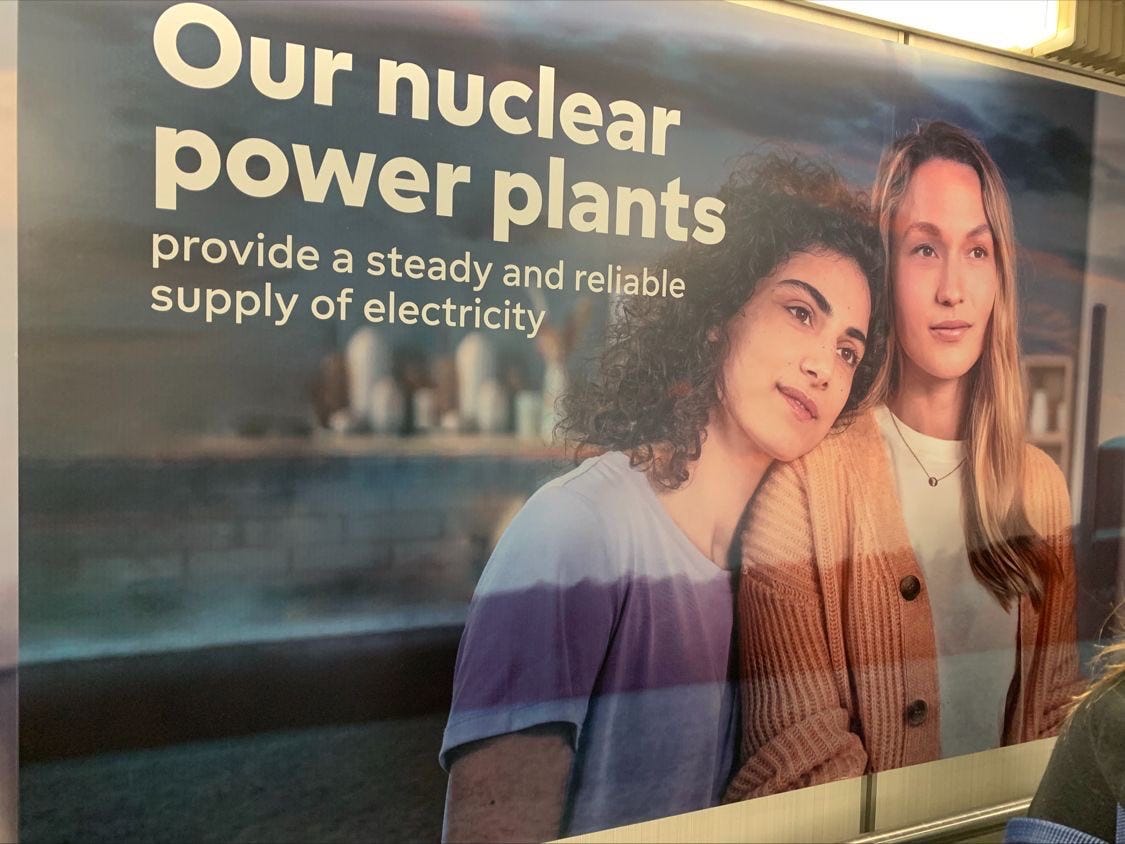
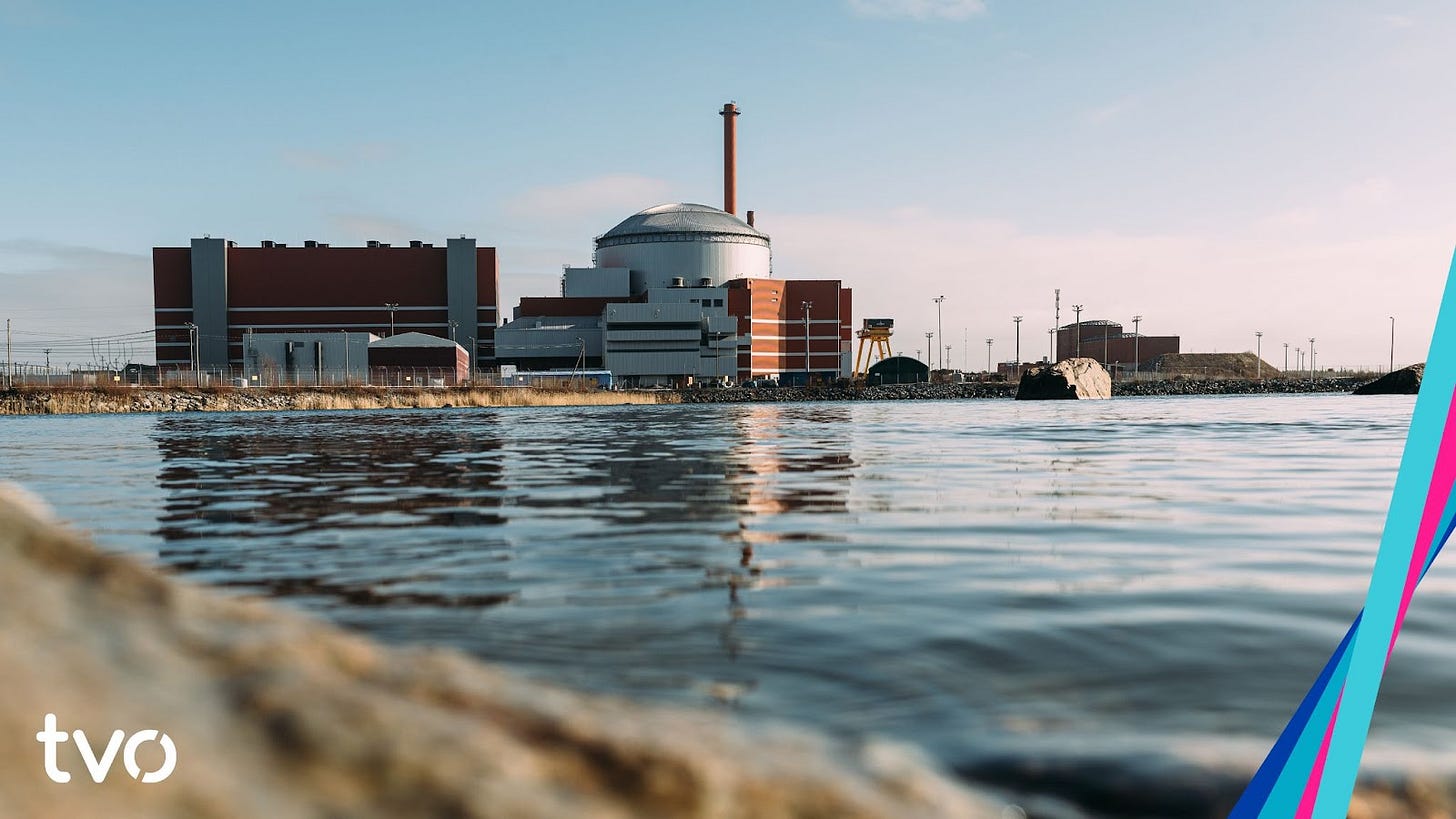
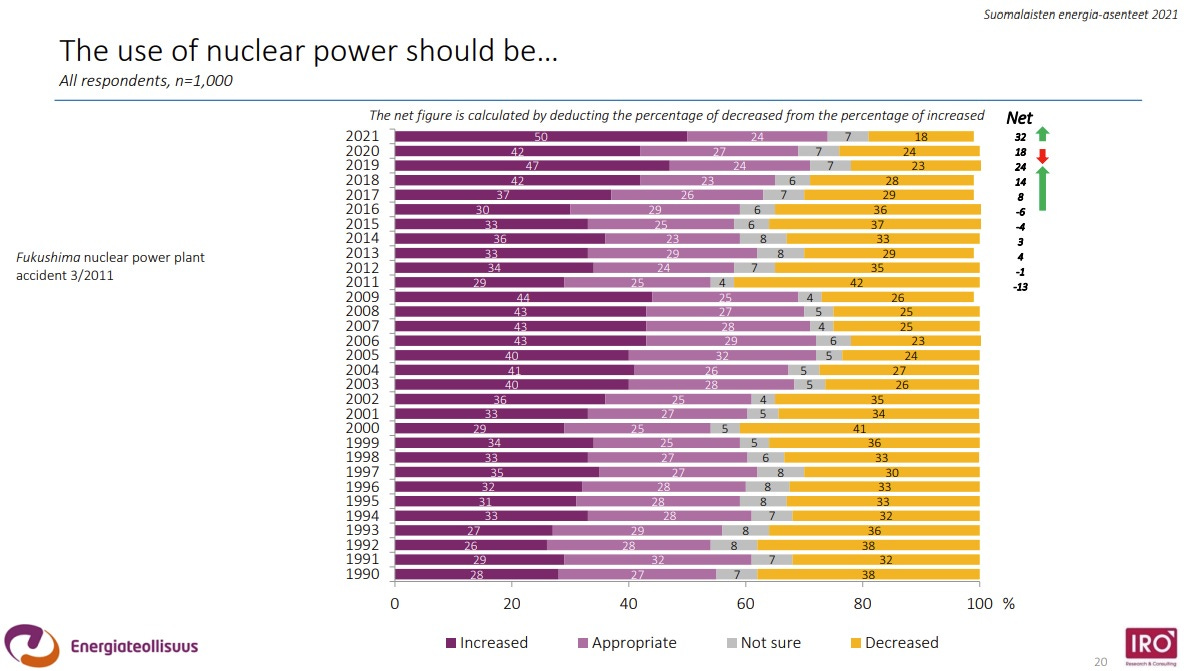
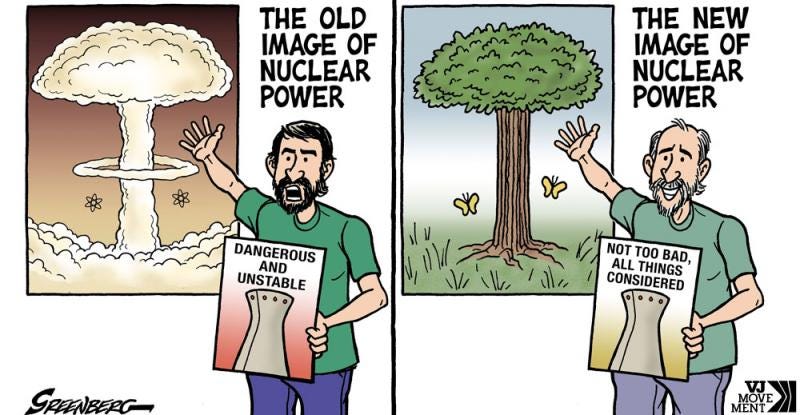
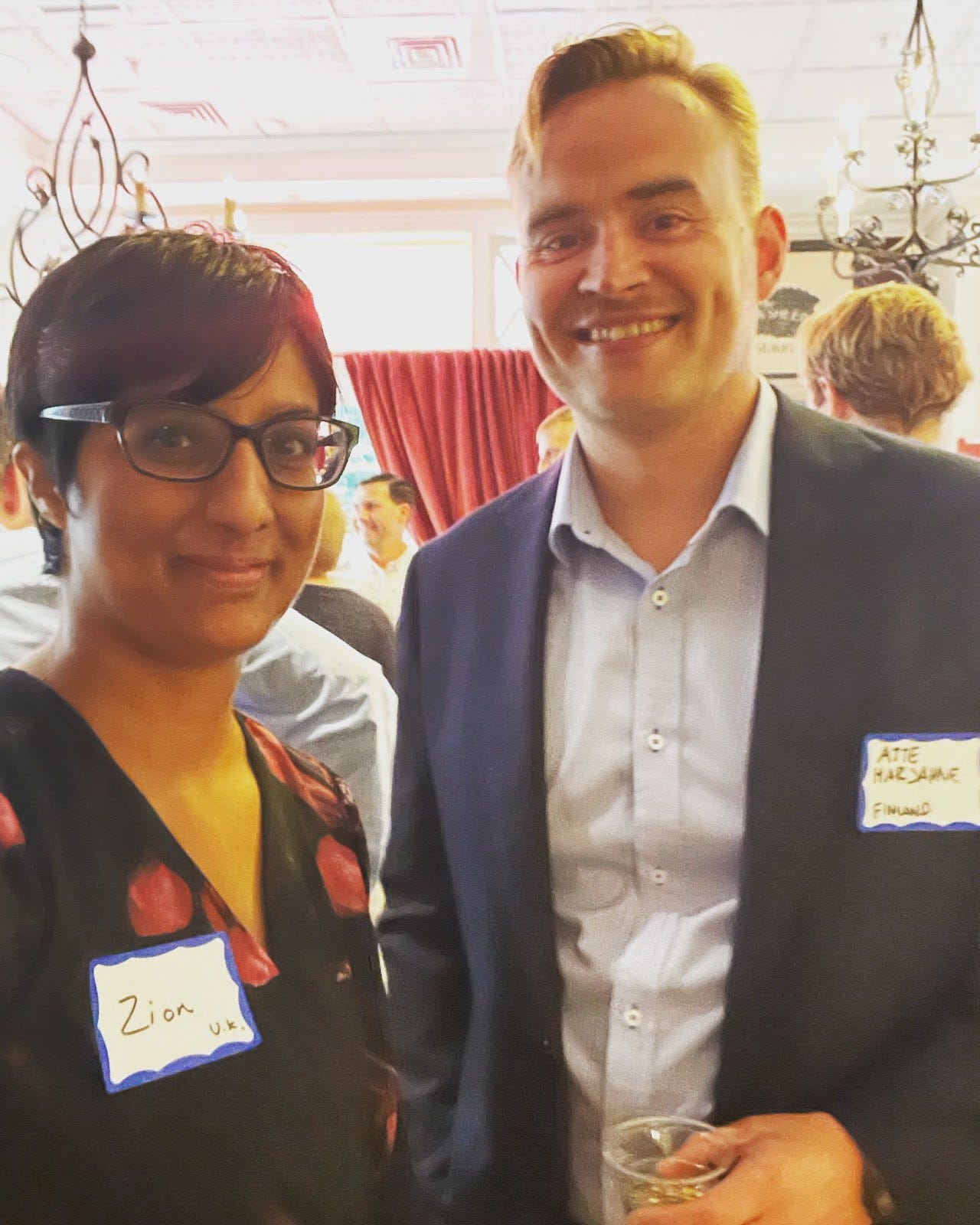
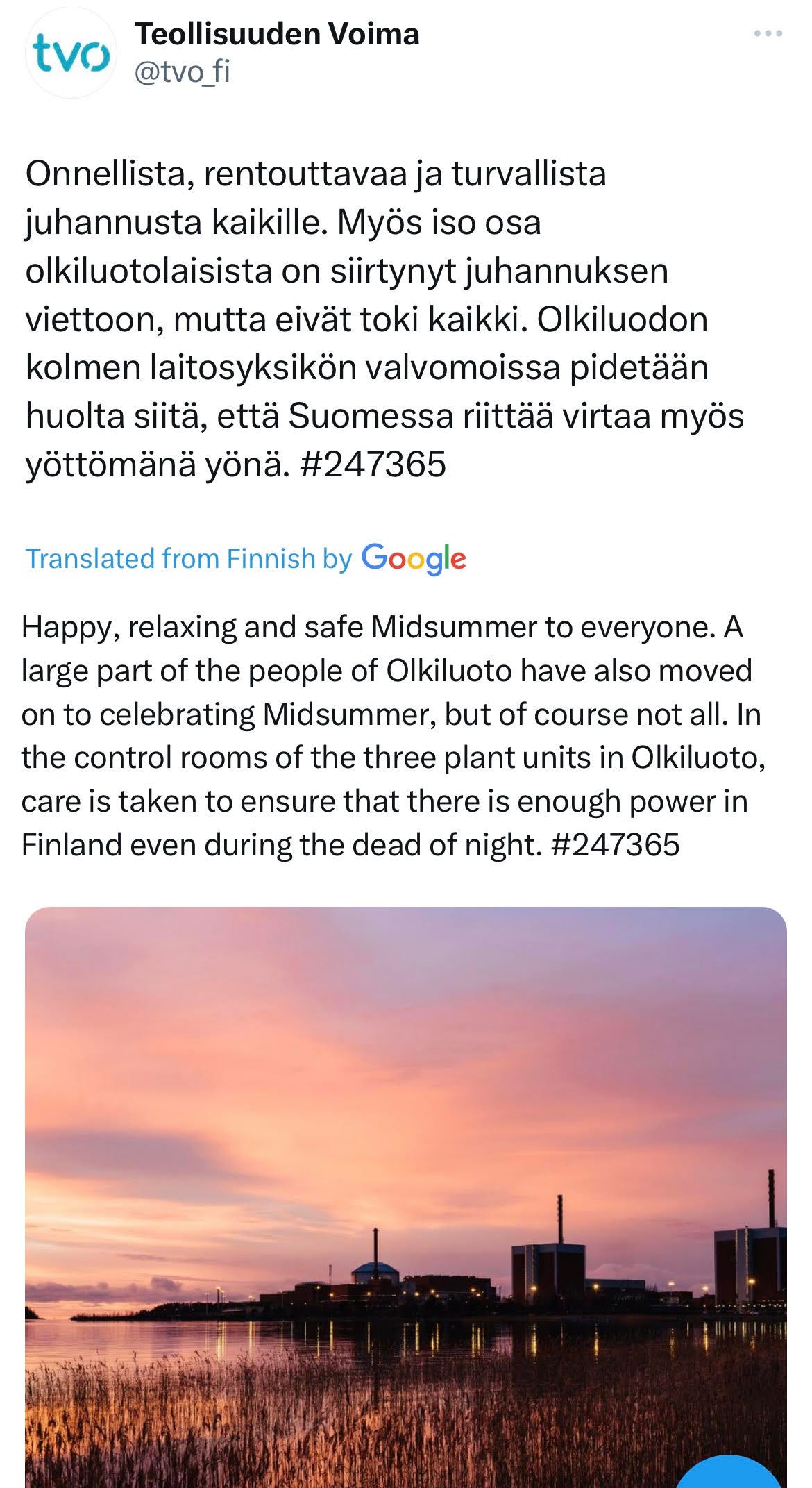
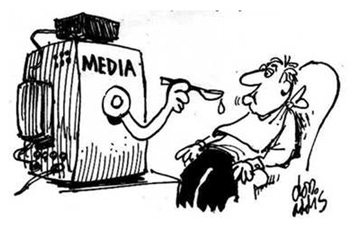

Excellent reference article. I appreciate the link between high quality education to rational development of clean energy.
The other concern is the need to dramatically increase the amount of clean energy for the world. Nuclear and geothermal are currently the only sources of constant energy. Without a dramatic growth of clean constant energy, the world will resort to more fossil energy.
Grid scale energy storage does not exist. Without grid scale storage, wind and solar are only useful in limited situations.
Excellent synthesis. A well-crafted insight into the social context of Finland and the journey to re-establish nuclear at the heart of the energy system. Worth recalling that historically the Finns have been oppressed by both Sweden and Russia and fiercely resisted the Nazis in World War 2. Same population as greater Sydney....